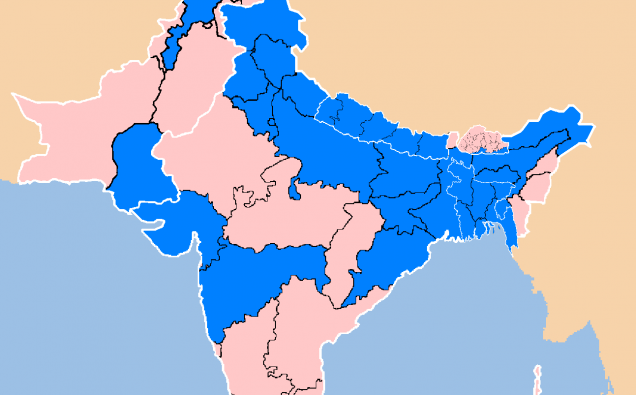
Image shows parts of South Asia hit by floods in 2007, Credit: Anameofmyveryown/Wikimedia Commons
A World Bank report fears that over 140 million people in densely populated regions of South Asia, Latin American and Sub-Saharan Africa could become climate migrants by 2050 in the face of disasters.
The latest climate change alarm bell says the situation could create a human crisis and threaten the development process.
But with concerted action – including global efforts to cut greenhouse gas emissions and robust development planning at the country level – this worst-case scenario of over 140m could be dramatically reduced, by as much as 80 percent, or more than 100 million people, a blogpost says.
The report, Groundswell – Preparing for Internal Climate Migration, is the first and most comprehensive study of its kind to focus on the nexus between slow-onset climate change impacts, internal migration patterns and, development in three developing regions of the world: Sub-Saharan Africa, South Asia, and Latin America.
It finds that unless urgent climate and development action is taken globally and nationally, these three regions together could be dealing with tens of millions of internal climate migrants by 2050, according to the report.
These are people forced to move from increasingly non-viable areas of their countries due to growing problems like water scarcity, crop failure, sea-level rise and storm surges, the report explains
These “climate migrants” would be additional to the millions of people already moving within their countries for economic, social, political or other reasons, the report warns.
![Global temperature anomalies for 2015 compared to the 1951–1980 baseline. 2015 was the warmest year in the NASA/NOAA temperature record, which starts in 1880. It has since been superseded by 2016 (NASA/NOAA; 20 January 2016).[75]](https://www.viewsnews.net/wp-content/uploads/2018/04/Global-Temperature-Anomalies-NASA-Image.jpg)
Global temperature anomalies for 2015 compared to the 1951–1980 baseline. 2015 was the warmest year in the NASA/NOAA temperature record, which starts in 1880. It has since been superseded by 2016 (NASA/NOAA; 20 January 2016).[75]
“We have a small window now, before the effects of climate change deepen, to prepare the ground for this new reality,” Georgieva said. “Steps cities take to cope with the upward trend of arrivals from rural areas and to improve opportunities for education, training and jobs will pay long-term dividends. It’s also important to help people make good decisions about whether to stay where they are or move to new locations where they are less vulnerable.”
According to the Bank, the research team, led by World Bank Lead Environmental Specialist Kanta Kumari Rigaud and including researchers and modelers from CIESIN Columbia University, CUNY Institute of Demographic Research, and the Potsdam Institute for Climate Impact Research – applied a multi-dimensional modeling approach to estimate the potential scale of internal climate migration across the three regions.
The researchers looked at three potential climate change and development scenarios, comparing the most “pessimistic” (high greenhouse gas emissions and unequal development paths), to “climate friendly” and “more inclusive development” scenarios in which climate and national development action increases in line with the challenge. Across each scenario, they applied demographic, socioeconomic and climate impact data at a 14-square kilometer grid-cell level to model likely shifts in population within countries.
The report proposes some key actions nationally and globally, including:
- Cutting global greenhouse gas emissions to reduce climate pressure on people and livelihoods, and to reduce the overall scale of climate migration
- Transforming development planning to factor in the entire cycle of climate migration (before, during and after migration)
- Investing in data and analysis to improve understanding of internal climate migration trends and trajectories at the country level.
While the scenario may sound too far away and hypothetical, the findings of the report should be taken as red warning signals, and put all stakeholders and the international community into action toward stopping climate change degradation.

















